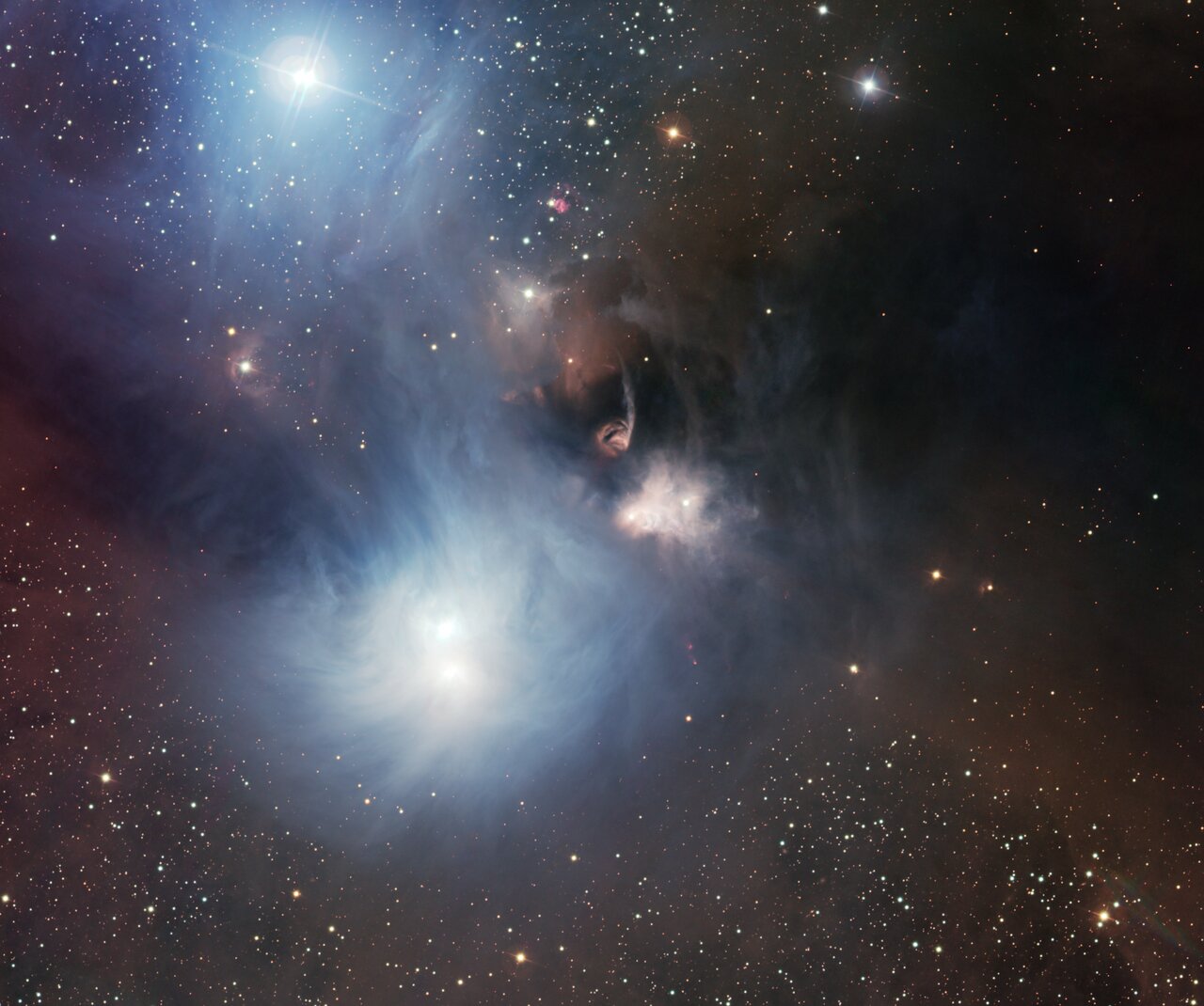ESO Photo Release | 2023 May 11
The L1688 region in the Ophiuchus Constellation (Infrared/Visible)
Credits: ESO/Meingast et al. (Infrared) / ESO/S. Guisard (Visible)
The Lupus 3 Region in the Constellation of Scorpius (Infrared/Visible)
Credits: ESO/Meingast et al. (Infrared) / ESO/R. Colombari (Visible)
The Coronet Star Cluster in the Corona Australis Constellation (Infrared/Visible)
Credits: ESO/Meingast et al. (Infrared) / ESO (Visible)Using ESO’s Visible and Infrared Survey Telescope for Astronomy (VISTA), astronomers have created a vast infrared atlas of five nearby stellar nurseries by piecing together more than one million images. These large mosaics reveal young stars in the making, embedded in thick clouds of dust. Thanks to these observations, astronomers have a unique tool with which to decipher the complex puzzle of stellar birth. ...
Stars form when clouds of gas and dust collapse under their own gravity, but the details of how this happens are not fully understood. How many stars are born out of a cloud? How massive are they? How many stars will also have planets?
To answer these questions, Stefan Meingast’s team surveyed five nearby star-forming regions with the VISTA telescope at ESO’s Paranal Observatory in Chile. Using VISTA’s infrared camera VIRCAM, the team captured light coming from deep inside the clouds of dust. ...
The survey, called VISIONS, observed star-forming regions in the constellations of Orion, Ophiuchus, Chamaeleon, Corona Australis, and Lupus. These regions are less than 1500 light-years away and so large that they span a huge area in the sky. The diameter of VIRCAM’s field of view is as wide as three full Moons, which makes it uniquely suited to map these immensely big regions. ...
VISIONS: the VISTA Star Formation Atlas — I. Survey Overview ~ Stefan Meingast et al
- Astronomy & Astrophysics 673:A58 (2023 May) DOI: 10.1051/0004-6361/202245771
- arXiv > astro-ph > arXiv:2303.08831 > 15 Mar 2023
VISIONS: the VISTA Star Formation Atlas — II. The Data Processing Pipeline ~ Stefan Meingast et al
- Astronomy & Astrophysics 673:A59 (2023 May) DOI: 10.1051/0004-6361/202245772
- arXiv > astro-ph > arXiv:2303.08840 > 15 Mar 2023








